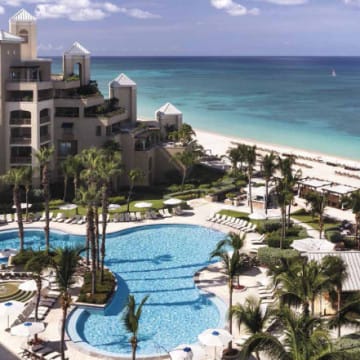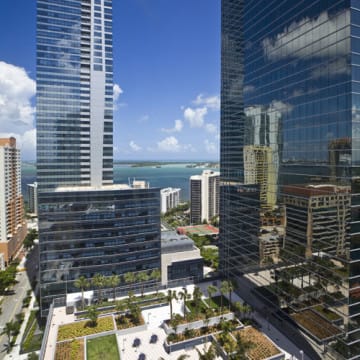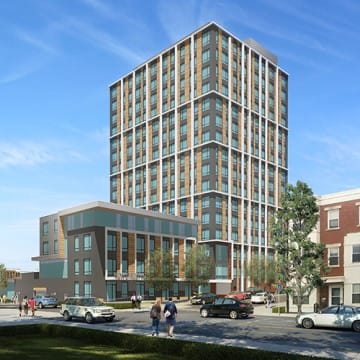Gaylord Opryland / Grand Ole Opry
In May 2010, a “1,000 year rant event” pummeled Nashville, Tennessee. More than 13 inches fell in two days, causing the Cumberland River to rise to the elevation of a 400-year flood and overtop a flood protection system. The flood caused nine deaths, destroyed or damaged thousands of homes, and caused more than $2 billion in damages in the city. Floodwaters inundated the historic Grand Ole Opry House, 800,000 square feet of the 4 million-square-foot Gaylord Opryland Resort and Convention Center, and most of the back-office facilities owned by Ryman Hospitality Properties Inc., which was then operating under the name of Gaylord Entertainment Company.
The performance stage of the Grand Ole Opry, the world-renowned country music venue, was covered with four feet of floodwater. At Gaylord Opryland, electrical switch rooms the size of small gymnasiums, all technology and communications infrastructure, miles of electrical wiring, and most of the facilities’ enormous kitchens and food storage areas were destroyed by the flood. Between the Opry House and the hotel and convention center, damages totaled more than $200 million. Flood remediation and refurbishment of the facilities took five months for the Opry House and six months for the resort and convention center.
During recovery, the company continued to pay employee wages for six weeks after the flood and also provided three months of health care coverage to the more than 1,800 employees who were temporarily laid off during the rebuilding. The out-of-service period for the Opryland properties, one of Nashville’s largest employers, had a huge impact on the local economy, negatively affecting suppliers, outsourcing companies, cleaning crews, transportation providers, and city revenues (the company at the time generated more than 20 percent of the city’s hotel taxes).
Mitigating Risks
In 2012, Ryman Hospitality Properties completed construction on a combined $17 million perimeter flood protection system around the hotel and the Opry House, to protect the 100-plus-acre site from another monumental flood. The large floodwall, which stands 10 feet tall in some places, is built of brick and concrete; the barrier system is completed with aluminum planks stored on the property that groundskeepers can install quickly to stop water from coming through pedestrian and vehicle gates. The new wall was built on top of a previous flood protection system constructed to a 100-year event standard following a 1975 flood. The owners reached out to the public to help alleviate fears that the floodwall could adversely affect surrounding properties.
Ryman Hospitality Properties built to the 500- year standard after the 2010 flood because of “the enormity of the damage and the fact it was so far-reaching,” says Bennett Westbrook, senior vice president of investments, design, and construction for Ryman Hospitality Properties Inc. “The idea of going through that again was unimaginable.” By exceeding the customary 100-year-flood protection level, they also “future-proofed” the property against changing federal flood regulations and increasing risks related to climate change. Ryman Hospitality Properties was the first U.S. company to install the flood barrier technology manufactured by EKO Flood USA LLC, using a flood protection system that has been proven effective in Europe for more than 20 years. The floodwall now offers better protection for two backup emergency generators, which are capable of powering facilities for five days. The property owners also increased the floodwater pumping capacity in the protected area from 50,000 gallons per minute to 125,000 gallons per minute to remove a greater volume of rainwater in the event of a flood.
Creating Value
Westbrook says spending $17 million on the two flood protection systems was “an easy call” considering the alternatives that another devastating flood could entail, such as massive property damages, business interruption, human toll, and implications to the company’s investors if the rebuilt facilities were not adequately protected. Such resilience measures also were a wise investment, he says, given the value of the assets—it would cost an estimated $2.5 billion to rebuild the Gaylord Opryland Resort and Convention Center and $100 million to replace the Grand Ole Opry House. The new flood protection wall and EKO flood system helped Ryman Hospitality Properties meet the requirements of the property insurer, FM Global, to qualify for insurance rating advantages and better coverage for roughly the same premium Ryman paid before building the wall. Although the owners’ financial commitment to employees resulted in very low turnover and saved significant costs in training new employees, Ryman Hospitality Properties believed that future-proofing the building against a similar expenditure was a wise move.
The Grand Ole Opry facilities represent “a lot of assets, a lot of expensive capital, and a tremendous amount of investment,” says Westbrook. He says the variety of measures Ryman Hospitality Properties has taken—building the floodwall, acting swiftly to fix damages, taking care of employees, and enhancing the public spaces during recovery construction—all have improved public relations, marketing, and the bottom line for the property. From this more positive perspective, Westbrook adds, the resilience process allowed for investments in the property that would not have been possible before the flood: “We took the opportunity to do extensive renovations during the dark period, which would have been far too disruptive to do had the hotel and Opry House been operational with customers in house.”
Westbrook says spending $17 million on the two flood protection systems was “an easy call,” considering the alternatives that another devastating flood could entail.


